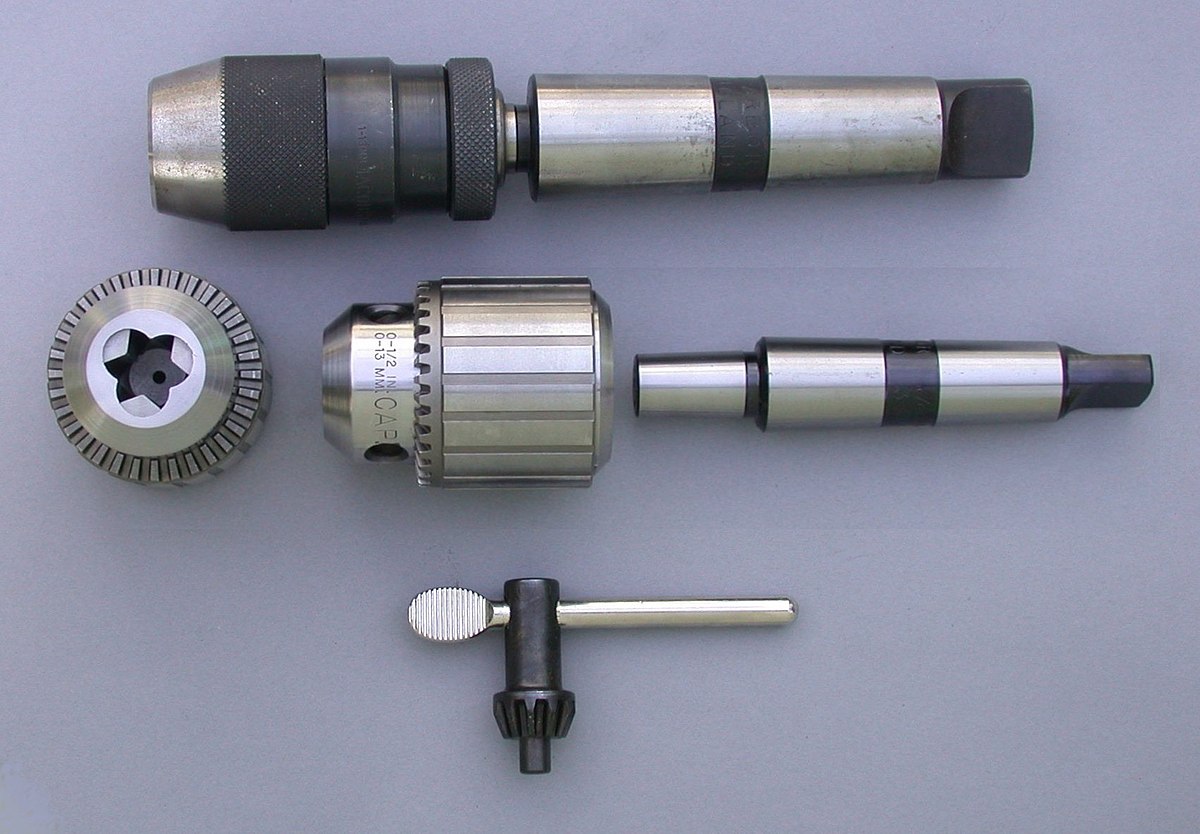The plot thickens. I no longer trust the TIR numbers I took with the R8 test bar, at all.
Buckle up, this is a bit of a long read.
One thing that really bothered me during testing initially was that the numbers were not initially repeating when I would unseat the test bar, re-insert, and re-test. I assumed that maybe the upper straight bore in the spindle wasn't quite concentric, and the torque I was applying at the drawbar was causing the test bar to bend slightly, making the measurements dependent on the torque applied. When using a torque wrench on the drawbar, the numbers all started repeating within a reasonable margin of error, so I kept going.
I ASSUMED the taper was still fully seating, because I'd still have to give a little whack on the drawbar with a mallet after backing off a few turns to unseat the taper.
I noticed when I was putting the test bar back in it's storage case last night that it was starting to develop a "polished ring" around where it was contacting the nose of both spindles, with zero markings anywhere else on it's taper.
I blued the taper on both spindles, checked each with the test bar, and sure enough, only seating ~1-2mm in a ring, at the nose. I grabbed every other piece of solid taper R8 tooling I have (2 chucks, a boring head, and an endmill holder) and NONE of them seated more than the same 1-2mm down near the nose.
Clearly, I'm not going to be able to measure TIR accurately regardless of how "true" the test bar is if it's not seating in the spindle taper.
I looked up the specs for an R8 taper, and while there's a bit of conflicting information, with many sites (and even books) having incorrectly represented minutes/second as decimal degrees, or not representing as in included angle, it's generally agreed that an R8 taper is 16 degrees and 51 minutes (16.85 degrees in decimal). I initially saw many people listing 3.5" per foot, but I don't believe this is accurate. For reference, 3.5" per foot would be 16.59 degrees in decimal. These figures are all represented as "included angle", meaning the angle of the sides of the taper relative to each other, NOT relative to the center line.
Locations that define R8 as 16 degrees and 51 minutes (16.85 degrees in decimal):

www.cgtk.co.uk

en.wikipedia.org

www.metalartspress.com
I spent some time thinking about how I could measure the taper on the spindles and the test bar, and came up with the idea that I could place the item to be measured in v-blocks on the milling table of the 728 and use the axis to move the table relative to a dial test indicator that measures the rise or fall of the taper a pre-determined amount, than look at the DRO to see how far I moved the axis to reach that amt.
Here's the measurements:
For spindle #1, I moved the axis 557 tenths to achieve 80 tenths in 'rise' on the spindle taper.
For spindle #2, I moved the axis 561 tenths to achieve 80 tenths in 'rise' on the spindle taper.
For the R8 test bar, I moved the axis 548 tenths to achieve 80 tenths in 'rise' on the spindle taper.
Drawing those out in CAD, I get:
spindle #1: 16.34 degrees
spindle #2: 16.23 degrees
R8 test bar: 16.61 degrees
The first spindle did test better on TIR than the 2nd, likely just due to a little more of the taper seating since they're closer, and not an actual difference in runout.
Without the test bar seating in the taper correctly, we can't tell if we're 'measuring' runout, or the runout is a result of the test bar or tooling not seating in the taper.
This likely matters less with collets, since they can 'crush' down some to accommodate for part of the gap, but any solid-taper tooling is not going to run true at all . . and none of mine does. What initially led me on this chase was what I thought was two defective PM keyless R8 chucks. "Runout" was terrible on both. Way outside of spec. I replaced those with a completely different brand R8 keyless check from another reputable US vendor. It was no better! Same thing on my endmill holder, but hey, it's a cheap import so I just figured it was the holder.
After getting the test bar and measuring ~3 thou of runout at 5" down, I thought this was case closed. I was wrong. I honestly have no idea how true the taper is to the bearing journals on either spindle. Could be damn near perfect.
What I do still know is that nothing with a solid R8 taper is going to run true in either of these spindles. Not even close. Even if it 'appeared to', it won't under load, because it can flex till the top part of the tapers touch.
I have no idea if it's standard practice to intentionally grind a spindle taper to the wrong angle to accommodate for 'fit' in either direction, but even if we assume some amt. of error in how I measured, I'm still showing a difference of .62 degrees in what the spindle measures and what the R8 spec calls for.
Anyone with a 728 following that can trying bluing the contact between their solid taper tooling and spindle? How about on some other mills?
Thanks for reading.


